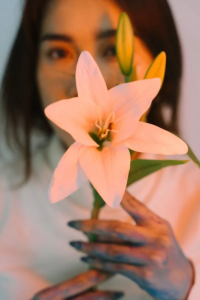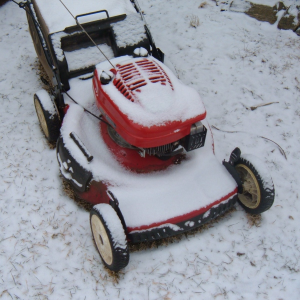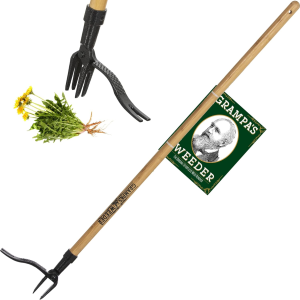
Tradescantia Nanouk, beloved for its vibrant hues and low maintenance, has become a favorite among plant lovers. Its pink, green, and purple leaves add charm to any indoor space. However, like all plants, it needs proper care. In this guide, we’ll explore how to ensure your Tradescantia Nanouk thrives for years to come.
Understanding Tradescantia Nanouk
Before we dive into care, let’s understand this plant. Tradescantia Nanouk, part of the spiderwort family, stands out with its colorful leaves and trailing growth. Its striped pattern makes it eye-catching.
Meeting Lighting Needs
Good light is essential for a healthy Tradescantia Nanouk. It prefers bright, indirect light but can handle some shade. Too little light may lead to leggy growth and faded colors. Aim for filtered sunlight near a window or consider artificial light. Additionally, ensuring adequate lighting conditions promotes optimal growth and enhances the plant’s visual appeal.
Addressing Watering
Proper watering keeps your Nanouk happy. Water when the top inch of soil is dry, letting excess water drain. Avoid overwatering to prevent root rot. During dormancy or winter, water less often. By carefully monitoring soil moisture levels and adjusting watering practices accordingly, you can prevent issues such as root rot and ensure the health of your plant.
Choosing Soil and Pots
Well-draining soil is key for Tradescantia Nanouk. Mix peat moss, perlite, and compost for healthy roots. Use pots with drainage holes to prevent water buildup, which can harm roots. Additionally, selecting the right soil and potting conditions provides a stable foundation for your plant’s growth and development.
Maintaining Temperature and Humidity
Keep your Nanouk comfortable. It likes temperatures between 65°F to 75°F and average household humidity. If your home is dry, use a humidifier or place a water tray nearby. Moreover, maintaining appropriate temperature and humidity levels creates an optimal growing environment and supports overall plant health.
Fertilizing
Though not picky, your Nanouk benefits from occasional feeding. During the growing season, use a diluted balanced liquid fertilizer every 4-6 weeks. Don’t overdo it to avoid harming the roots. Furthermore, providing the right nutrients in appropriate amounts supports healthy growth and enhances the appearance of your plant.
Pruning and Maintenance
Regular upkeep keeps your Nanouk in top shape. Remove dead or yellowing leaves promptly. Trim leggy stems to encourage bushier growth and maintain a tidy appearance. By incorporating regular pruning and maintenance into your care routine, you can promote a tidy appearance and prolong the lifespan of your plant.
Managing Pests and Diseases
While resilient, Nanouk may face pests or diseases. Regular checks can catch issues early. Rinse with water or use insecticidal soap to treat pests without harming the plant. Moreover, implementing proactive measures to prevent and manage pests and diseases safeguards the health and vitality of your plant.
Propagating
Enjoy propagating your Nanouk with ease. Stem cuttings root well in water or soil. Snip a healthy stem below a node, remove lower leaves, and place in water or soil until roots develop. Additionally, propagating your Tradescantia Nanouk allows you to propagate your plant, providing you with the opportunity to expand your collection and share your love of gardening with others.
Troubleshooting
If your Nanouk shows signs of trouble, don’t panic. Check its care routine and adjust as needed. Addressing issues promptly can help your plant recover. By identifying and addressing common issues promptly, you can prevent further damage and promote the recovery of your plant.
Some frequently questions
Is tradescantia nanouk toxic to cats?
Tradescantia Nanouk, like many plants in the Tradescantia genus, contains compounds that can be toxic to cats if ingested in large quantities.
These plants contain insoluble calcium oxalates, which can irritate the mouth, throat, and gastrointestinal tract of cats, leading to symptoms such as drooling, vomiting, and difficulty swallowing. While Tradescantia Nanouk is not considered highly toxic, it’s still essential to keep it out of reach of curious pets and monitor your cat’s behavior around the plant.
If you suspect your cat has ingested any part of the Tradescantia Nanouk plant and is exhibiting concerning symptoms, it’s best to contact your veterinarian for guidance.
Is tradescantia nanouk a succulent?
Tradescantia Nanouk is not classified as a succulent.
It belongs to the genus Tradescantia, which consists of herbaceous perennial plants known for their colorful foliage and trailing growth habit. While some species within the Tradescantia genus, such as Tradescantia pallida (Purple Heart), may exhibit succulent-like characteristics such as fleshy stems, Tradescantia Nanouk does not possess these traits.
Instead, it is characterized by its succulent-like appearance due to its thick, fleshy leaves and trailing stems but is not classified as a true succulent plant.
Is tradescantia nanouk a wandering jew?
Yes, Tradescantia Nanouk is a type of Wandering Jew plant.
The term “Wandering Jew” is a common name used to refer to several species within the Tradescantia genus, including Tradescantia zebrina, Tradescantia fluminensis, and Tradescantia pallida. Tradescantia Nanouk, with its colorful foliage and trailing growth habit, is a cultivar or variety of the Wandering Jew plant, known for its distinctive appearance and ease of care.
Conclusion
With proper care and attention, Tradescantia Nanouk can thrive as a stunning centerpiece in your indoor garden. By understanding its needs and providing a nurturing environment, you’ll be rewarded with lush foliage and vibrant colors year-round. Whether you’re a seasoned plant parent or just beginning your green journey, cultivating Tradescantia Nanouk is sure to bring joy and beauty to your home.





